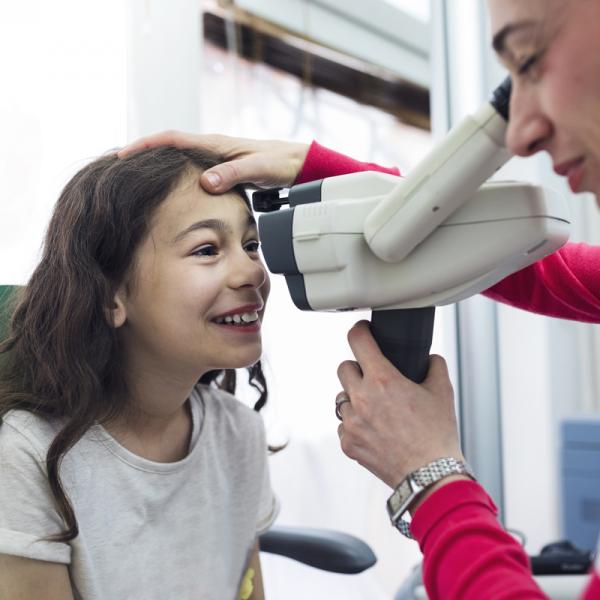What is amblyopia?
Amblyopia (also called lazy eye) is a type of poor vision that usually happens in just 1 eye but less commonly in both eyes. It develops when there’s a breakdown in how the brain and the eye work together, and the brain can’t recognize the sight from 1 eye. Over time, the brain relies more and more on the other, stronger eye — while vision in the weaker eye gets worse.
It’s called “lazy eye” because the stronger eye works better. But people with amblyopia are not lazy, and they can’t control the way their eyes work.
Amblyopia starts in childhood, and it’s the most common cause of vision loss in kids. Up to 3 out of 100 children have it. The good news is that early treatment works well and usually prevents long-term vision problems.
What are the symptoms of amblyopia?
Symptoms of amblyopia can be hard to notice. Kids with amblyopia may have poor depth perception — they have trouble telling how near or far something is. Parents may also notice signs that their child is struggling to see clearly, like:
- Squinting
- Shutting 1 eye
- Tilting their head
In many cases, parents don’t know their child has amblyopia until a doctor diagnoses it during an eye exam. That’s why it’s important for all kids to get a vision screening at least once between ages 3 and 5.
Is my child at risk for amblyopia?
Some kids are born with amblyopia and others develop it later in childhood. The chances of having amblyopia are higher in kids who:
- Were born early (premature)
- Were smaller than average at birth
- Have a family history of amblyopia, childhood cataracts, or other eye conditions
- Have developmental disabilities
What causes amblyopia?
In many cases, doctors don’t know the cause of amblyopia. But sometimes, a different vision problem can lead to amblyopia.
Normally, the brain uses nerve signals from both eyes to see. But if an eye condition makes vision in 1 eye worse, the brain may try to work around it. It starts to “turn off” signals from the weaker eye and rely only on the stronger eye.
Some eye conditions that can lead to amblyopia are:
- Refractive errors. These include common vision problems like nearsightedness (having trouble seeing far away), farsightedness (having trouble seeing things up close), and astigmatism (which can cause blurry vision). Normally, these problems are easy to fix with glasses or contacts. But if they’re not treated, the brain may start to rely more on the eye with stronger vision.
- Strabismus. Usually, the eyes move together as a pair. But in kids with strabismus, the eyes don’t line up. One eye might drift in, out, up, or down.
- Cataract. This causes cloudiness in the lens of the eye, making things look blurry. While most cataracts happen in older people, babies and children can also develop cataracts.
How will my child’s doctor check for amblyopia?
As part of a normal vision screening, your child’s doctor will look for signs of amblyopia. All kids ages 3 to 5 need to have their vision checked at least once.
What’s the treatment for amblyopia?
If there’s a vision problem causing amblyopia, the doctor may treat that first. For example, doctors may recommend glasses or contacts (for kids who are nearsighted or farsighted) or surgery (for kids with cataract).
The next step is to re-train the brain and force it to use the weaker eye. The more the brain uses it, the stronger it gets. Treatments include:
-

Wearing an eye patch on the stronger eye. By covering up this eye with a stick-on eye patch (similar to a Band-Aid), the brain has to use the weaker eye to see. Some kids only need to wear the patch for 2 hours a day, while others may need to wear it whenever they're awake.
-

Putting special eye drops in the stronger eye. A once-a-day drop of the drug atropine can temporarily blur near vision, which forces the brain to use the other eye. For some kids, this treatment works as well as an eye patch, and some parents find it easier to use (for example, because young children may try to pull off eye patches).
After your child starts treatment, their vision may start to get better within a few weeks. But it will probably take months to get the best results. After that, your child may still need to use these treatments from time to time to stop amblyopia from coming back.
It’s important to start treating children with amblyopia early — the sooner the better. Kids who grow up without treatment may have lifelong vision problems. Amblyopia treatment is usually less effective in adults than in children.
